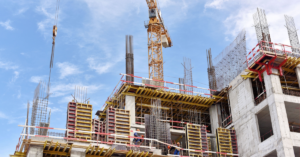After a solid year in 2018, in which the estimated $562.1 billion in sales of significant commercial real estate assets were close to the peak of the market in 2015, deal volume cooled significantly to begin 2019, according to Real Capital Analytics (RCA).
RCA data shows prices for assets valued at $2.5 million or higher rose by a solid 6.2 percent year over year in 2018, but the annual gain in prices has been decelerating. Jim Costello, RCA senior vice president, discussed the outlook for the remainder of 2019 with Scotsman Guide, including the reasons why he remains optimistic that the market will perk up after a slow start this past January.
Preliminary sales-volume figures from RCA were down 31 percent year over year this past January. Why did transaction volume drop so steeply?
You had an awful lot of turmoil in the financial markets in the fourth quarter [of 2018], and then things started to calm a little bit. It feels like people were still interested in putting their money into yield-focused assets. It’s just people weren’t sure what was going on and what kind of pricing would be appropriate. The cost of debt changed a bit and it became more difficult to underwrite.
Given the length of this recovery cycle, was it surprising to you that transaction volume in 2018 was still near a record?
The surprise in 2018 really was the mega deals. You have a lot of portfolio and entity-level transactions where people were buying whole companies at a time. You had some very big transactions that helped. Without them, you still would have had a great deal volume. Single-asset sales are still at an elevated level.
Is a lack of for-sale inventory the main reason prices keep rising, and yet transaction volume has dropped?
The combination that we saw in January of declining volume and increasing prices fits with a market where owners are not bringing assets to market. Folks who have capital really have no choice but to pay whatever prices those owners are looking for. It also fits in those few locations where you see people jumping in to build high-quality assets, since they can’t buy them. There’s a handful of markets nationally where developers have been a little bit more active.
Who has been buying commercial properties?
Cross-border investors have been the most active in that, and it just makes sense given the kind of capital that they have to deploy. A Brookfield [Brookfield Asset Management] was one of the leading groups, and it makes sense. It’s a group that manages billions of dollars for pension funds, and [it’s] trying to put all that money to work at once. You know, you can get a great yield if you buy a warehouse building outside of Columbus, Ohio, but … the price per square foot for that building is so low, and you have to buy a lot of those [buildings], do a lot of legwork, to get that yield. So, the operational efficiency of buying whole platforms at a time to deploy the capital is advantageous for them.
Is there still a lot of financing available for deals?
There’s still a lot of capital trying to figure out how to deploy. That hasn’t changed. The question is, where can they do that efficiently? In January, prices grew [and] deal volume fell. And so, that’s just indicative of a market where buyers and sellers just have different expectations on prices. It is just harder to bring everybody to the table.
Do you see any threats that could cause a downturn in the market?
I think the driving force in January was the turmoil in the financial markets. Some of the turmoil that impinged on January is starting to fade. So, basically, the outlook looks pretty good, and people will say that there’s still interest in the sector. You know, the things that cause trouble are fading. We’ll see. Keep your fingers crossed on the rest of the year.
Author
-

Victor Whitman is a contributing writer for Scotsman Guide and a former editor of the publication’s commercial magazine.
View all posts





